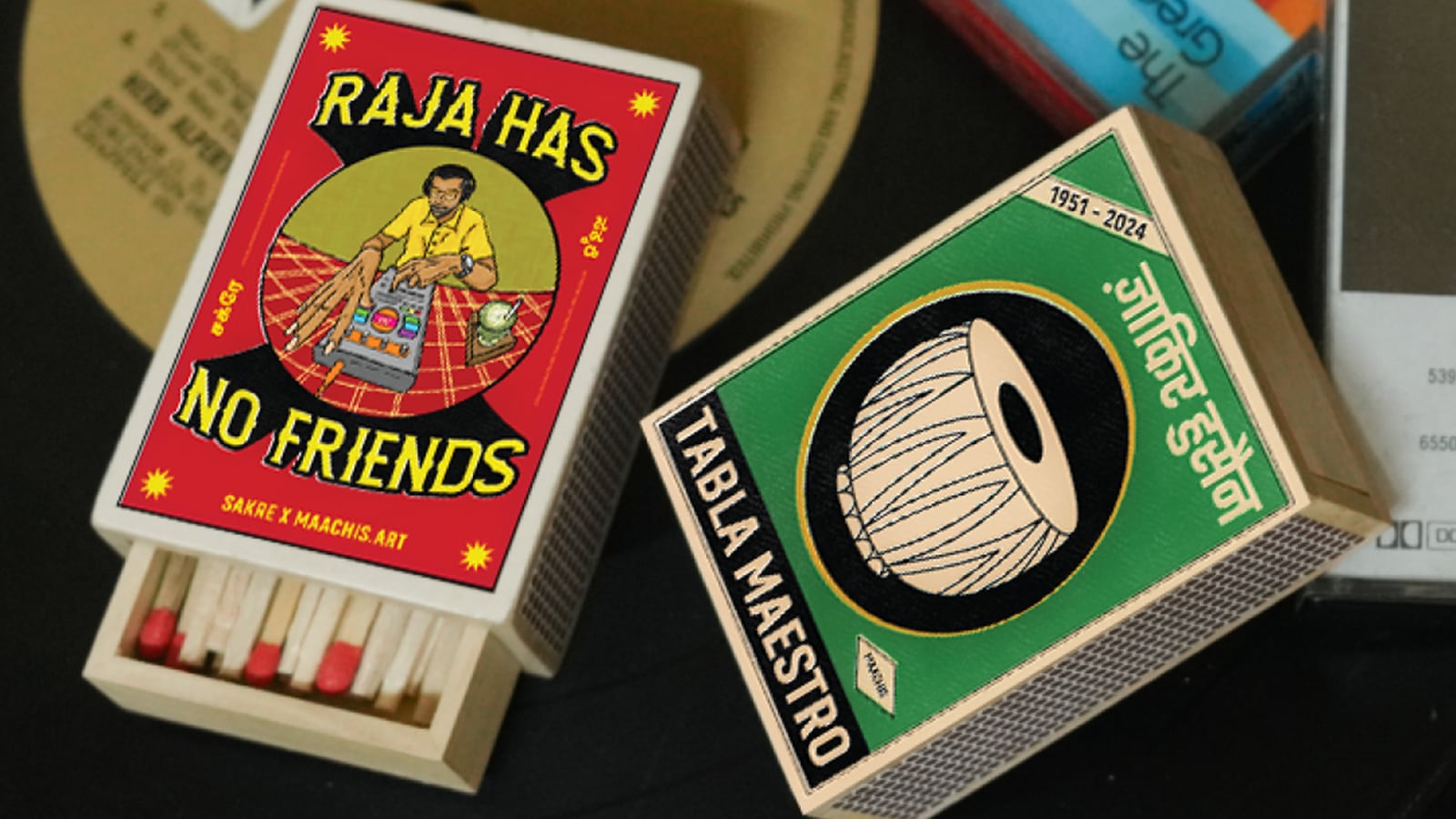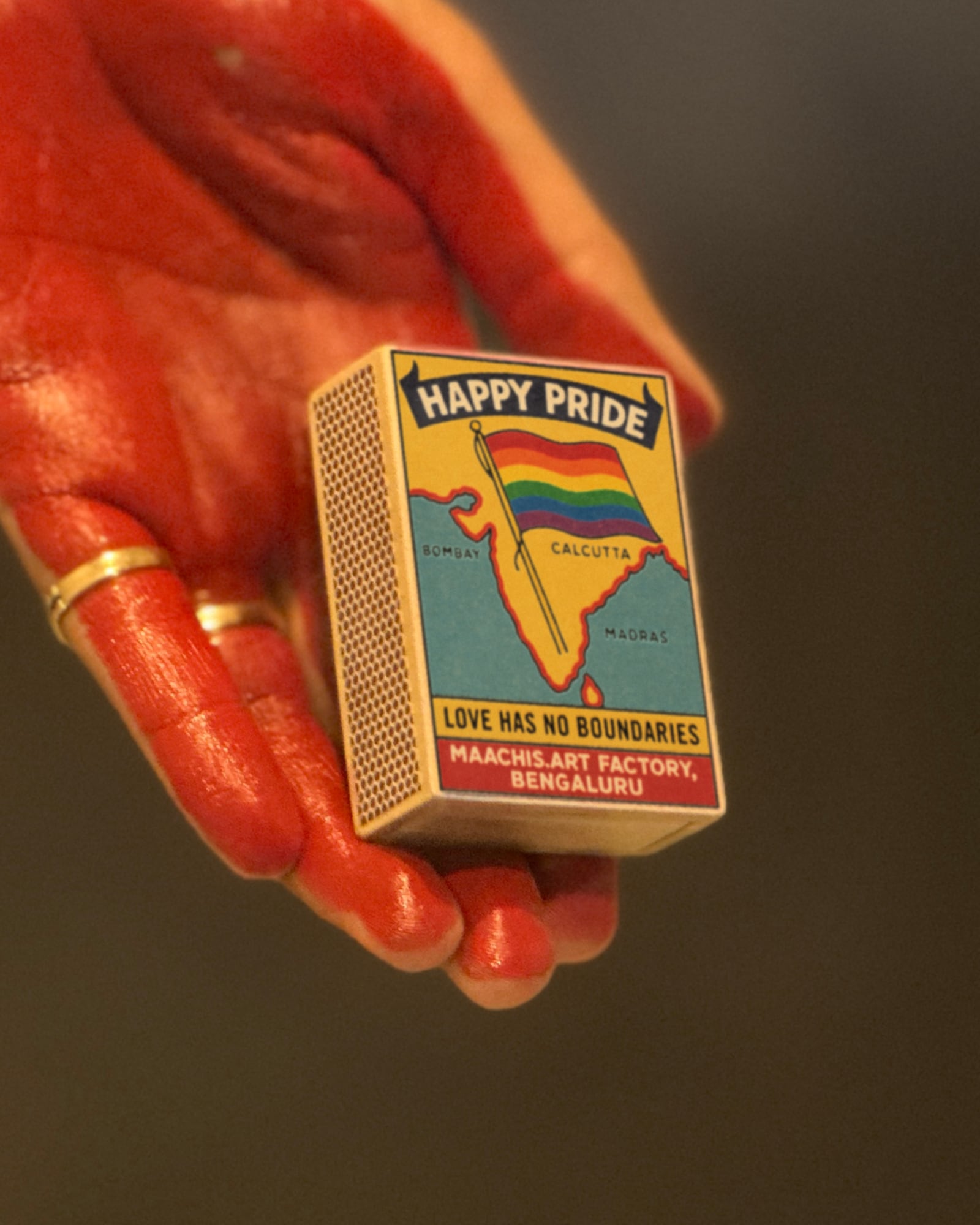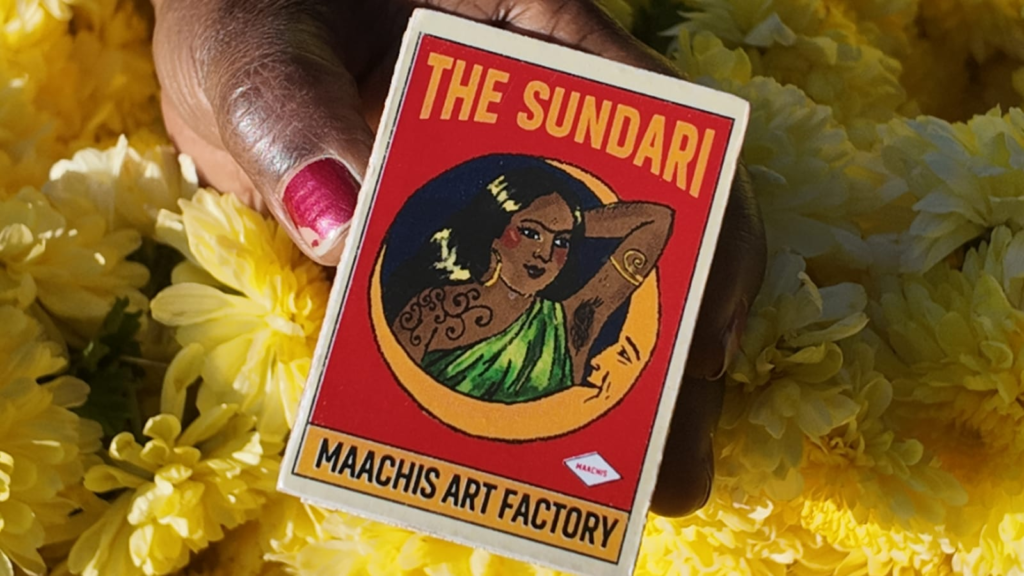It begins, as many things in India do, at a tea stall.
You’re waiting for chai. Someone lights a cigarette. A matchbox slides across the counter — torn at the edges, its label peeling. A tiger mid-prowl. A goddess frozen mid-blessing. You’ve seen them a hundred times, but never really looked. Once you do, they’re hard to unsee.
Tiny as they are, Indian matchboxes have carried mythology, politics, pop culture, and even rebellion to the forefront of our minds. In their prime, they were portable postcards of the nation’s imagination.
Today, a handful of collectors, artists, and design educators are working to ensure these two-inch canvases don’t disappear in a puff of smoke.
The collector who struck a spark
Mukul Mittal still remembers the moment this hobby lit up for him: “It started quite randomly about 10 years ago at the Pushkar Mela. I saw tattered matchboxes scattered on the ground. Each had a different illustration, and that instantly caught my eye. I became curious about what made its way onto these tiny canvases.”
Since then, he’s collected hundreds – some picked up on his travels, others gifted by friends. His Instagram page, Maachis Man, is a delightful archive of vintage designs. Part of his collection is even displayed at his brother’s vinyl store in Delhi.
 Today, a handful of collectors, artists, and design educators are working to ensure these two-inch canvases don’t disappear in a puff of smoke. (Image credit: Maachis art/Sonal Nagwani)
Today, a handful of collectors, artists, and design educators are working to ensure these two-inch canvases don’t disappear in a puff of smoke. (Image credit: Maachis art/Sonal Nagwani)
“Honestly, I didn’t even know the hobby had a name until much later,” he said, adding, “People rarely pay attention to the art on a matchbox; it’s taken for granted. But visitors often find a personal connection with one design or another. Some even take them home as souvenirs.”
Story continues below this ad
From Sivakasi to Swadeshi
India’s love for matchbox art goes back more than a century. In the early 1900s, most labels were imported from Sweden and Japan. But soon, Indian printers, especially in places like Calcutta and later Sivakasi, started creating their own designs.
“India’s matchbox art scene is as layered as the country itself,” said professor Chavi Sood, who teaches design at Alliance University. “What began as local adaptation evolved into a miniature art movement. Labels featured gods, freedom fighters, animals, trains, film stars, consumer goods, and even political symbols.”
By the mid-20th century, matchboxes became tiny time capsules. “They became storytelling tools carrying cultural dreams, public messages, and personal fantasies into everyday life, and reflected everything from nationalism to modernisation – Charkha one year, a Maruti car the next,” said Sood.
Childhood nostalgia-turned design revival
For Sonal Nagwani, co-founder of the design project Maachis (with Kevin Thomas), the fascination began in childhood. “Maachis really began in those moments at paan shops and tea stalls, flipping through matchboxes, picking out colourful designs,” she recalled.
Years later, as a designer, those childhood memories found a new expression. Inspired by online archives and encounters with artists like Farid Bawa, who revived Indian truck art, she and Thomas started Maachis to preserve the matchbox aesthetic.
Story continues below this ad
“It struck us how matchbox labels, truck panels, old textile patterns, and calendar prints once spoke a vibrant visual language, now fading under the tide of digital mass production,” she said. They’ve since turned old labels into posters, zines, and even home décor, each piece carrying a bit of history with it.
“The response to the art has been surprisingly emotional. We’ve seen how a tiny matchbox can spark connection –– between generations, between strangers, between past and present. For many, it feels like rediscovering a language they never knew they’d forgotten,” Nagwani told indianexpress.com.
 By the mid-20th century, matchboxes became tiny time capsules. “They became storytelling tools carrying cultural dreams, public messages, and personal fantasies into everyday life, and reflected everything from nationalism to modernisation (Image credit: Maachis art/Sonal Nagwani)
By the mid-20th century, matchboxes became tiny time capsules. “They became storytelling tools carrying cultural dreams, public messages, and personal fantasies into everyday life, and reflected everything from nationalism to modernisation (Image credit: Maachis art/Sonal Nagwani)
Why matchbox art faded and how it’s finding its way back into the zeitgeist
Like many slow disappearances, matchbox art didn’t vanish overnight. The decline was gradual, pushed along by gas stoves, plastic lighters, digital printing, and mass-market packaging.
“There’s no one moment. It was a slow decline. Economic liberalisation, the fall of small manufacturers, and the rise of templated designs all played a part,” said Mittal.
Story continues below this ad
Today, most matchboxes in circulation are bland, mass-printed, and forgettable. The quirky gods, pop icons, and animals have mostly disappeared.
However, the interest is starting to return, especially from a younger generation hungry for things that feel handmade and full of meaning.
“We don’t see Maachis as a niche interest anymore,” said Nagwani. “If anything, it’s the younger generation that’s driving its revival… In a world that feels fast, digital, and disposable, there’s a renewed longing for things that feel real, handmade, and rooted.”
Professor Sood agreed, saying, “Gen Z loves nostalgia, irony, and craft. I see students light up when they discover a quirky matchbox design. Some say it says more in two inches than most ads do in twenty feet.”
Small enough to hold, big enough to remember
For Mittal, collecting matchboxes is about making memories: “A matchbox from a tiny café or a guesthouse becomes a timestamp. That connection makes it special.”
Story continues below this ad
Even if the interest stays niche, the hope is that more people will stop and notice before striking the match.
For professor Sood, it’s come full circle – from being a collector of matchboxes herself since childhood to a design educator helping students find meaning in everyday things.
“It reminds me that good design isn’t always big, expensive, or famous,” she said. “Sometimes, it’s something small enough to fit in your palm, but large enough to stay in your memory for life.”

